Up Next

In his first two Formula 1 outings, Oscar Piastri struggled to make as big an impression on track as he had off it with last year’s high-profile contract shenanigans – but he made his point with eighth place third time out in Australia. On top of his own strong performance, he also had some payback with “things going wrong for other people”.
Piastri started 16th after qualifying 0.274 seconds slower than team-mate Land Norris, much of which was lost in the high-speed Turn 10/11. Team principal Andrea Stella said Piastri maintained his early-season trend of being “close to Lando in most of the corners”.
From there, he drove a clean race and even kept out of trouble at the final standing restart, despite the Alpines colliding alongside him, to take his maiden points finish. It was a strong drive and any good fortune was well-deserved given the bad luck he suffered in particular in Saudi Arabia, where he clashed with Pierre Gasly at the first corner and the resulting debris damaged Norris’s front wing.
“Maybe a little bit, the first two races couldn’t have gone much worse I would say for the team,” said Piastri when asked by The Race if there was an element of karmic justice after the first two weekends.
“[In] Bahrain we both had our issues and Saudi with the contact wiping out both of us, so it was nice to be on the good end of other things going wrong for other people.”
But this wasn’t the result of simply circulating while others hit trouble. The Race has reviewed Piastri’s entire grand prix to explain his path to eight place, what it showed us about his strengths and where he still needs to improve.

Piastri made a good start, entering Turn 1 on the inside of Haas driver Kevin Magnussen with the AlphaTauri of Nyck de Vries on the outside of both. There was light contact with the Haas with his left-rear that led to a request over the radio to check for damage, but he otherwise did a good job to stay out of trouble.
Having taken a tight line into the first corner, his exit from Turn 2 was compromised so he slotted in behind Magnussen to run 15th. That became 14th when Charles Leclerc went off at Turn 3, then 13th when Alpine brought Esteban Ocon in under the resulting safety car.
This potentially put Piastri in a difficult situation strategically. Other than De Vries, behind him on hards, the others behind him had all pitted with aspirations of running to the end. But Piastri stayed on Plan A, with a more orthodox pitstop time planned.
He had a reasonable restart, although wasn’t as close to Magnussen as he would have liked to be. But before that stint could play out in any meaningful way, Alex Albon crashed his Williams at Turn 6. This led to the deployment of the safety car, with McLaren again telling him to stay out. That proved a wise decision given the safety car was then unexpectedly upgraded to a red flag.
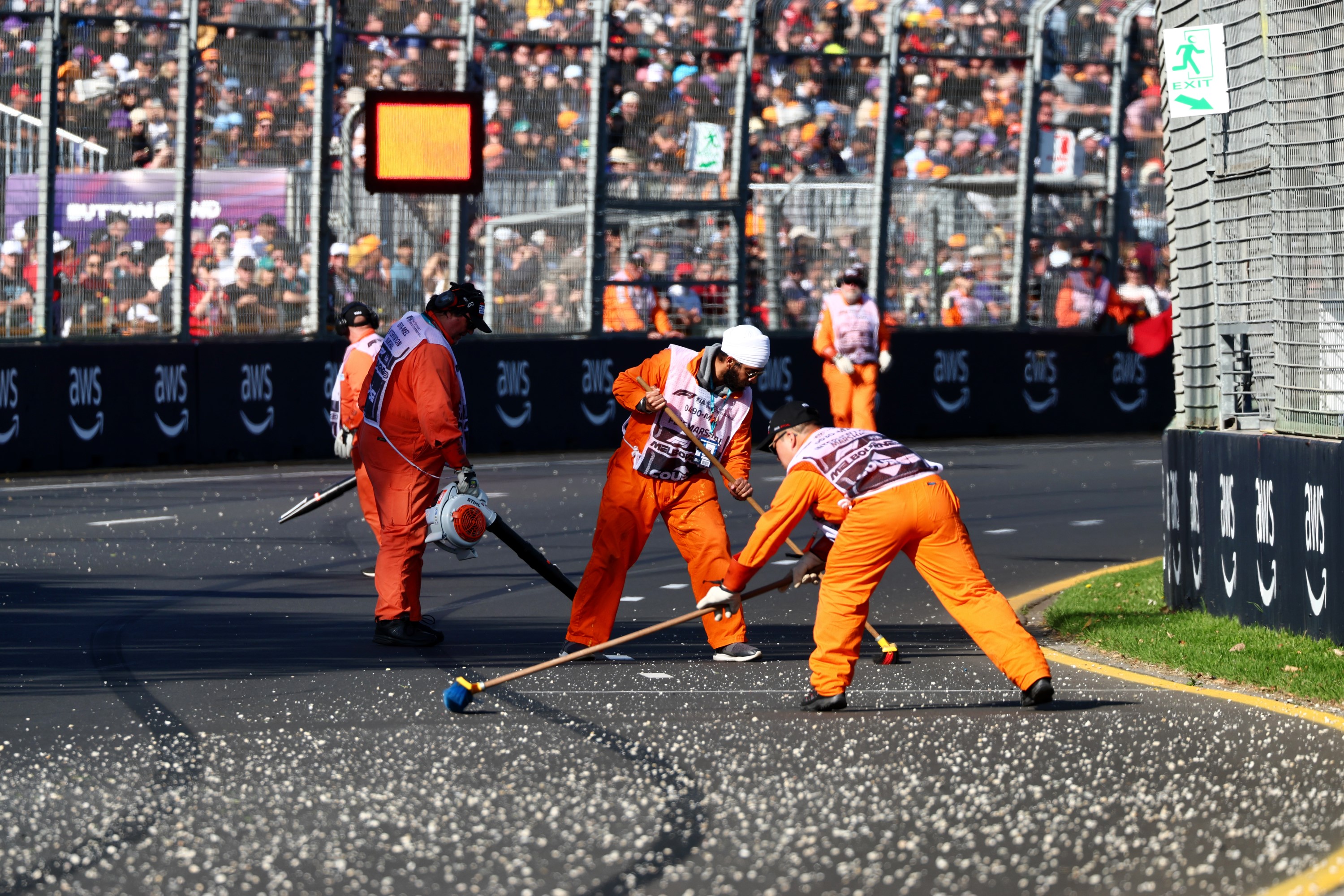
Piastri reported a little understeer and warned that he had spotted a little front-left graining on his first set of tyres. But most importantly, he was able to have a tyre change while the race was stopped. This allowed McLaren to switch from his starting set of medium Pirellis to hards with a view to him running to the end.
Piastri took the restart in 10th place, just behind team-mate Norris. He didn’t have as good a start, with a hint of wheelspin, but Ferrari driver Carlos Sainz, who had stopped under the safety car before the red flag and lost positions, passing him around the outside into Turn 1 was no concern given the pace advantage. That left Piastri 11th and, with Sainz soon passing Norris, he found himself behind his team-mate. When the DRS was enabled again, he was told to hold position behind Norris.
However, Norris quickly found his way past Yuki Tsunoda on the approach to Turn 9 on lap 14. Piastri’s priority was now to follow his team-mate past, which he attempted to do entering Turn 1 on the following lap. Tsunoda defended, then edged left at the entry to the corner. That resulted in Piastri’s front-right wheel rubbing the AlphaTauri’s front left. Fortunately, there was no damage.
“A bit of the contact [that] in the end didn’t do much,” said Piastri when asked about the incident.
“It was a bit of a squeeze, but no harm done. We both lived to see another day.”
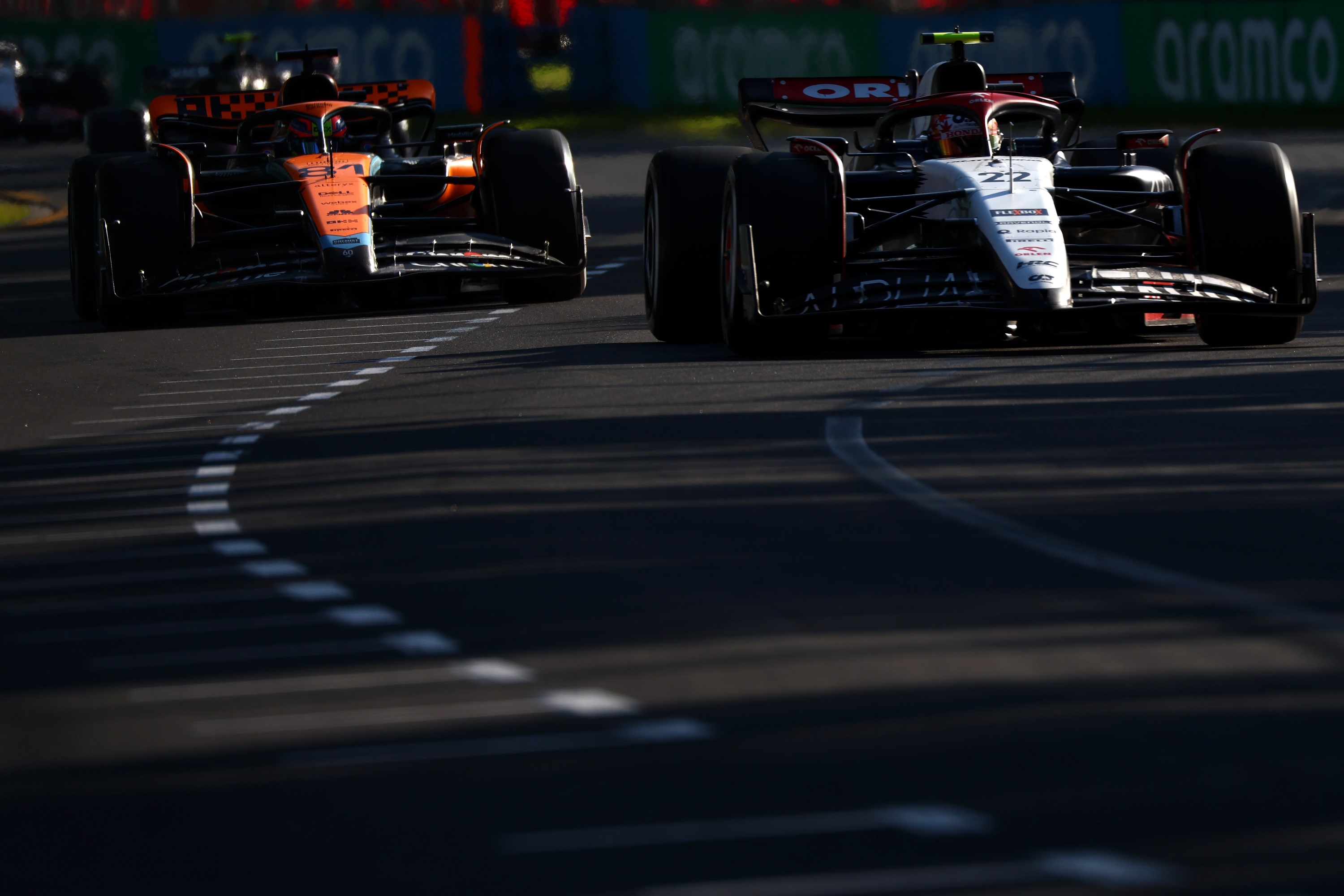
This was the start of a frustrating phase of the race for Piastri.
On lap 18, the virtual safety car was deployed to allow the recovery of George Russell’s Mercedes, meaning Piastri moved up to 10th. But he was still unable to get near enough to pass Tsunoda, coming closest when he pulled alongside on the outside approaching Turn 11 on lap 21. Again, he wasn’t in a position to make that move stick and wisely backed out.
He inevitably came under threat from the quicker cars behind. Recovering Red Bull driver Sergio Perez was the first to overtake, with Piastri wisely not being aggressive in his defence approaching Turn 9. “Follow him through, Oscar,” was the sound advice from race engineer Tom Stallard given Perez was then free to attack Tsunoda. However, Tsunoda cooperatively let Perez go by on the run to Turn 9 next time round and didn’t give Piastri a chance to attack.
On lap 24, Piastri had a run on Tsunoda into Turn 9 but wasn’t in a position to attack either there or at Turn 11. Two laps later, he was close entering Turn 3 but wasn’t able to attempt a move. He then dropped to 12th when Ocon overtook him into Turn 9.
With Ocon dispatching Tsunoda on lap 27, it was back to chasing the AlphaTauri for Piastri. His chance came on lap 29 when he first had a vague look into Turn 3 before replicating Norris’s pass by overtaking on the outside approaching Turn 9.
Fifteen laps earlier, Piastri had been right behind Norris when his team-mate passed Tsunoda. Now, he had slipped to just over 12 seconds behind his team-mate, who was chasing Haas driver Nico Hulkenberg. So time lost behind Tsunoda ensured he was disconnected from this battle.
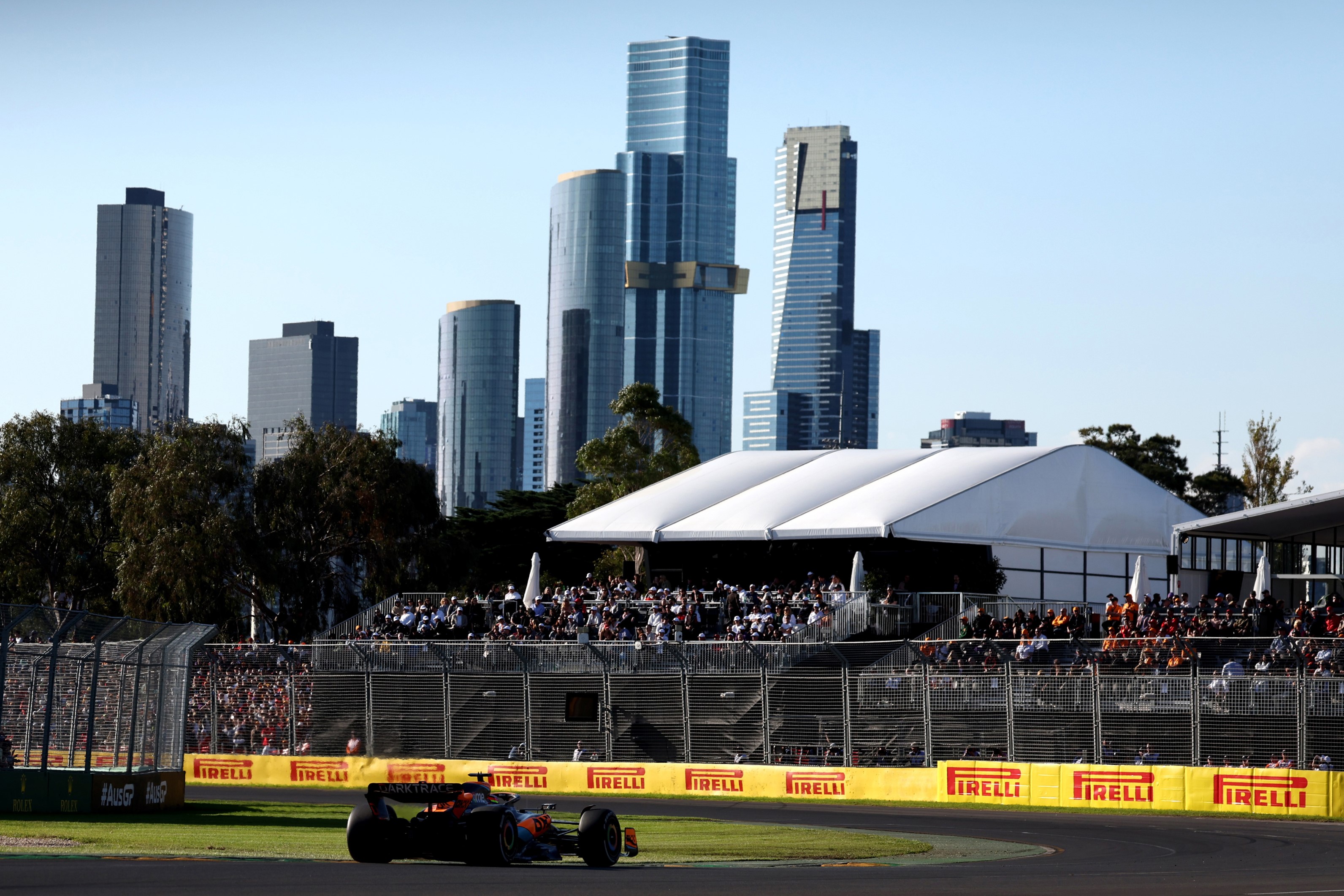
“It’s tricky, we obviously know we’re quite slow on the straights at the moment, which is something we’re looking to address,” said Piastri of the challenge of overtaking given the McLaren struggles on the straights due to being far from the most aero-efficient car on the grid.
“The AlphaTauri probably wasn’t that much quicker in a straight line, but I think even with the fourth DRS zone it’s still just difficult to overtake here. For me, still some learning to do with how to use the battery most effectively to overtake, but I got a lot of practice with it. [It’s] still good learning.”
But Piastri was happy with his race from this point. In clear air, it was all about trying to close the gap to the cars ahead, Norris and Hulkenberg, while building an advantage over those behind.
During this phase, he felt encouraged by his pace.
“The first start and the first lap was pretty good and then the middle of the race just got stuck behind Yuki, a bit too long, just couldn’t really find a way past, trying a few different things with the battery to try and use it in the right place and stuff,” said Piastri.
“Once I got past him the pace seemed to be pretty good, so positive day.”
This phase of the race was characterised by Stallard giving Piastri brief feedback on areas to work on with his driving. Initially, he was told to increase minimum speed in Turn 1, then focus on the exit. He then had to work on exit speed out of the Turn 9/10 sweep with a view to improving speed on the run to Turn 11. He also found a little more time in the Turn 4 left-hander.
It was a lonely phase of the race, but one that allowed him to work on how he managed his resources while maximising pace. During this phase, the laptime loss to Norris was reduced to just under a quarter of a second per lap on average.
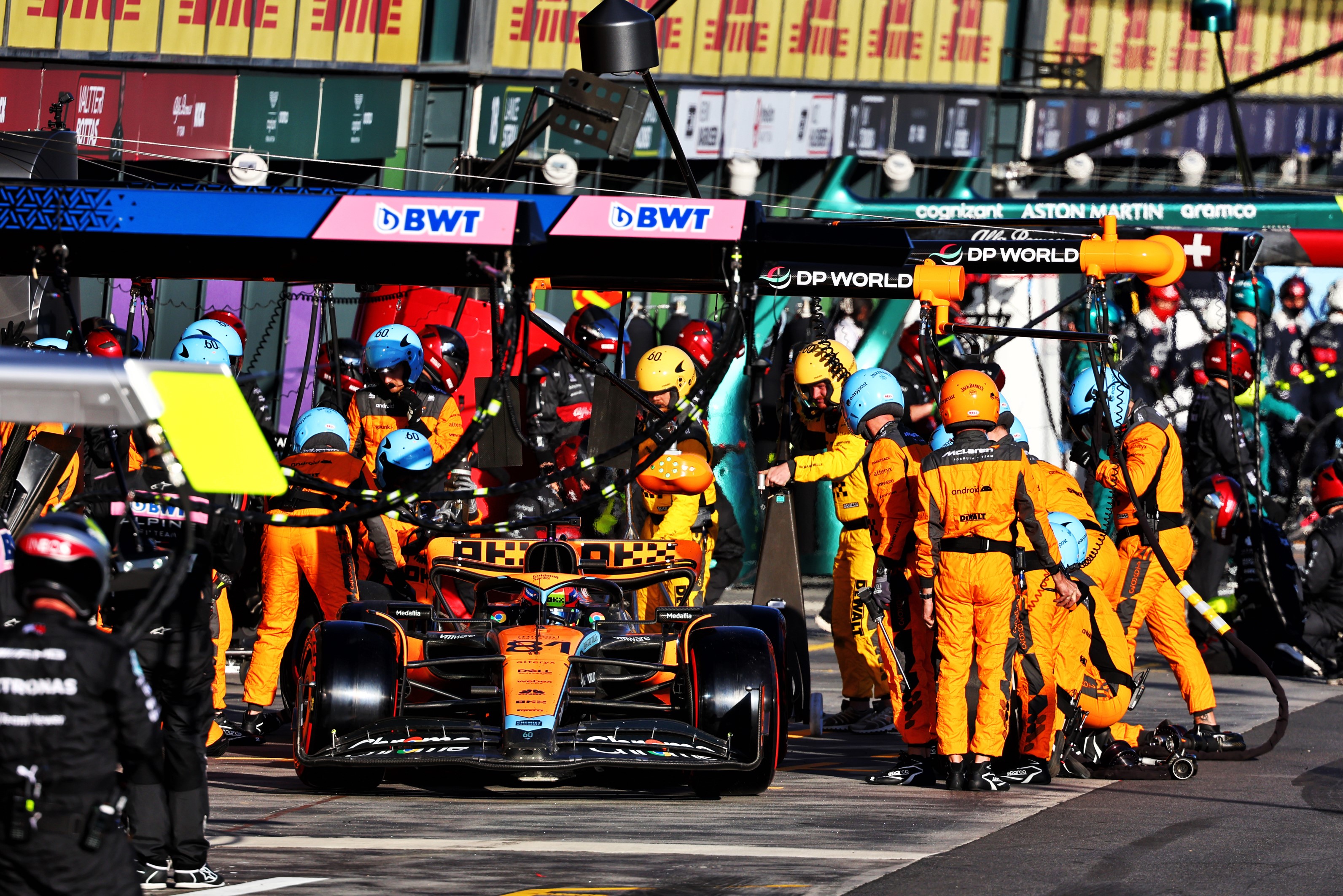
When the safety car was deployed, Piastri was brought in for softs. Although the race was then red-flagged, his advantage over Zhou Guanyu behind was big enough to have made a stop without losing a position even if Alfa Romeo hadn’t brought its car in.
During the red flag, Piastri reported he was happy with the balance of the car. He suggested there was a hint of understeer, but nothing problematic, and an attempt was made to replicate that kind of balance on the softs by adding a little more front wing.
He took the restart 11th, with a touch of wheelspin in the second phase allowing Tsunoda to get ahead. But he stayed clear of the chaos and held seventh when the race was stopped. When the positions were reset for the single-lap roll round to the chequered flag, that meant he was ninth thanks to the absence of the Alpines, which became eighth when Sainz was penalised.
“I’m definitely happy to have my first points on the board, especially here at home,” said Piastri. “Was a crazy race obviously, I think that’s the first race that I’ve had three red flags – probably most people’s first race like that.
“We kept ourselves out of trouble and ended up in the points at the end, which is great.”
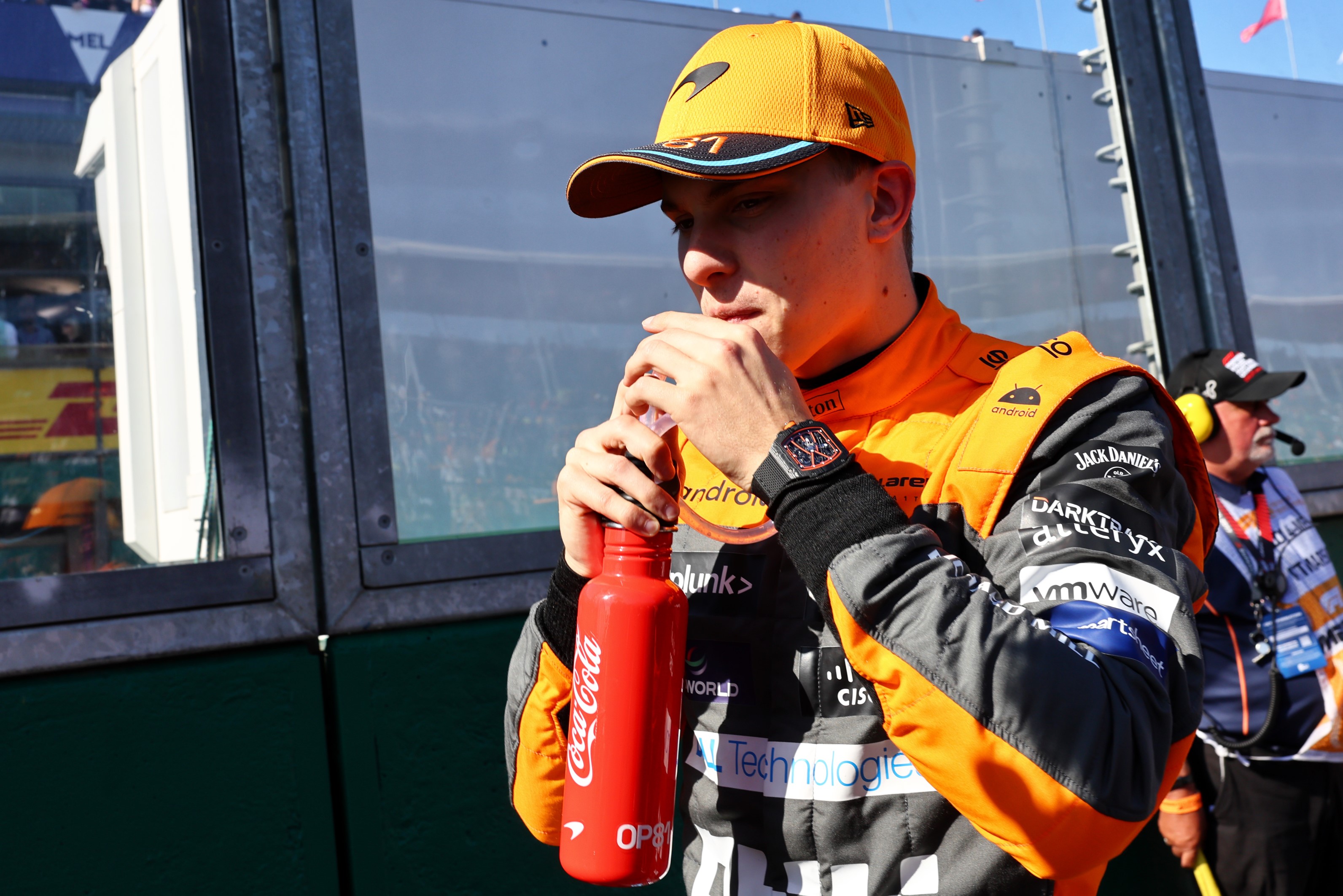
It was a well-executed, level-headed performance from Piastri, particularly in terms of the way he didn’t get impatient while stuck in traffic, and finally a tangible result to show why McLaren was so eager to sign him. There will be better results to come as the McLaren improves and, as Piastri pointed out, things to learn from in terms of the need to eliminate the time loss in duelling Tsunoda and the inevitable learning curve of how to manage race stints to the level Norris does.
It was an encouraging weekend, especially given Piastri was so quick to highlight areas for improvement when speaking after the race.
Piastri has stacked up well against Norris at his best, but as with any rookie it will take time and experience to join the dots of those peaks of performance. Until then, the peaks point to the potential to offer a real challenge to Norris in the long run and, based on that, Piastri is showing signs of being every bit the driver McLaren expects him to be.







